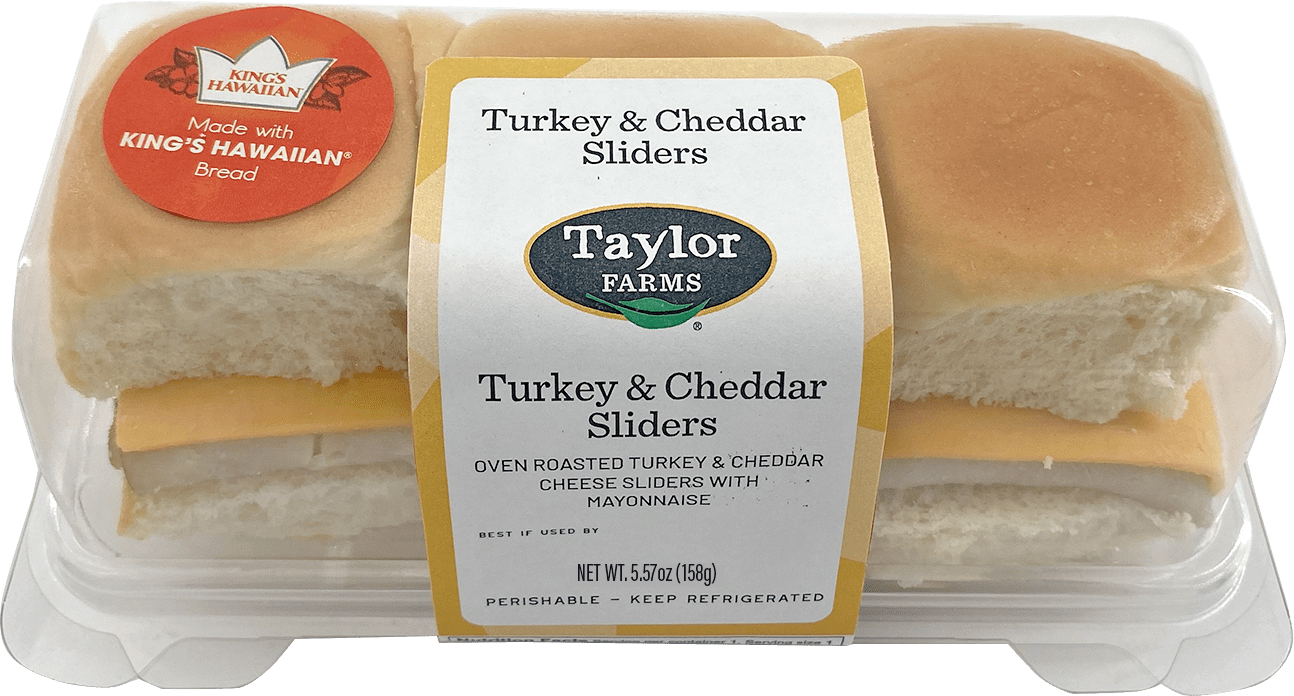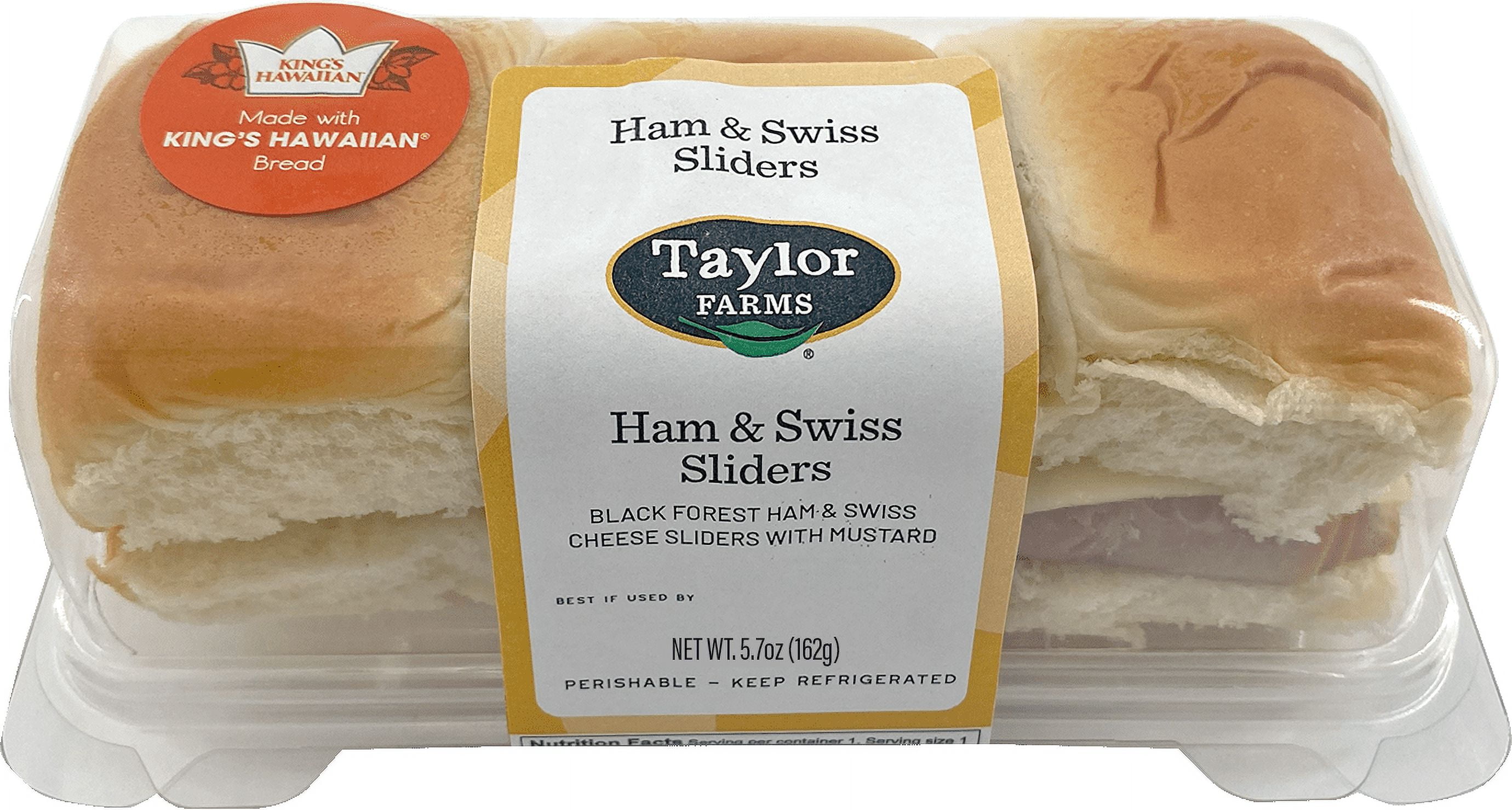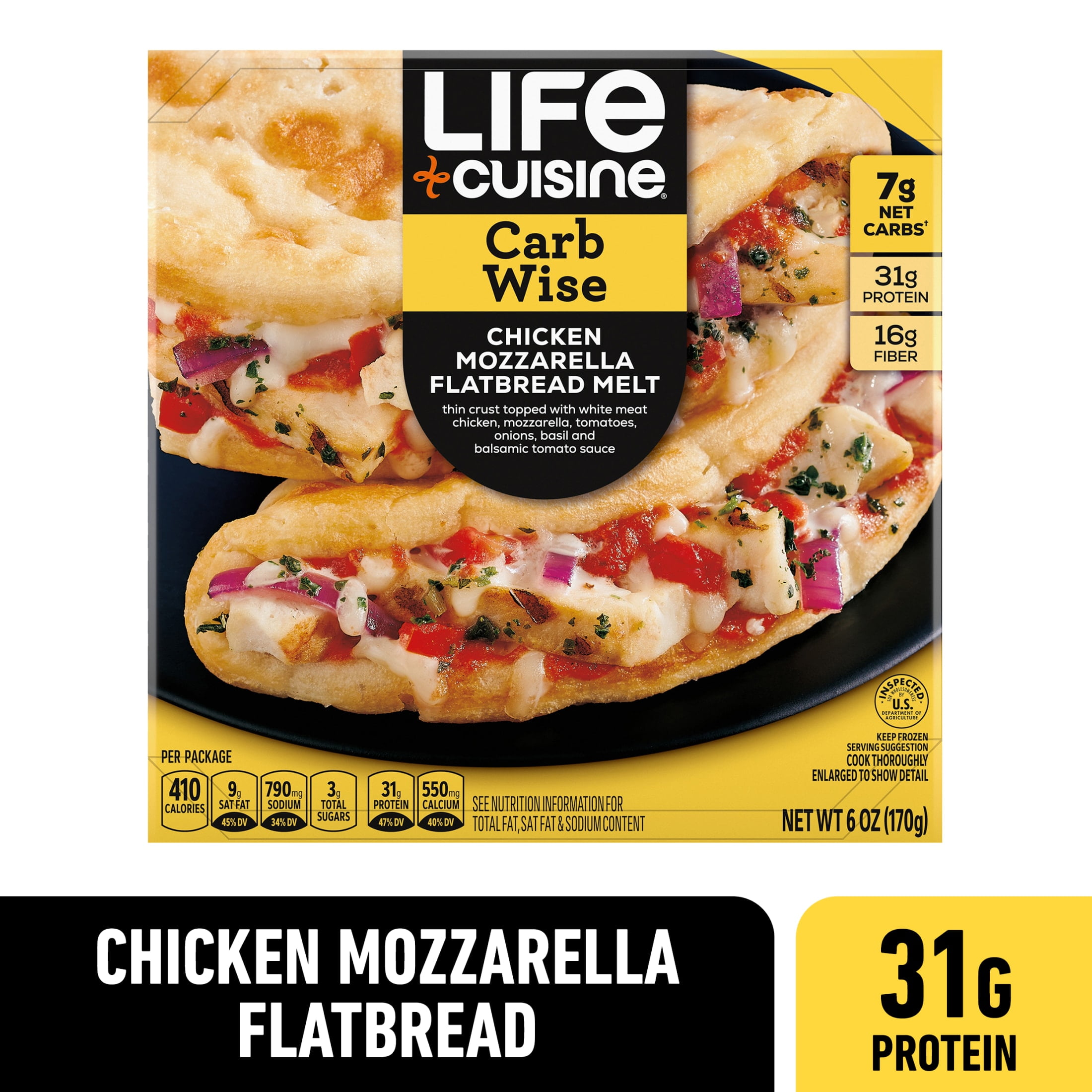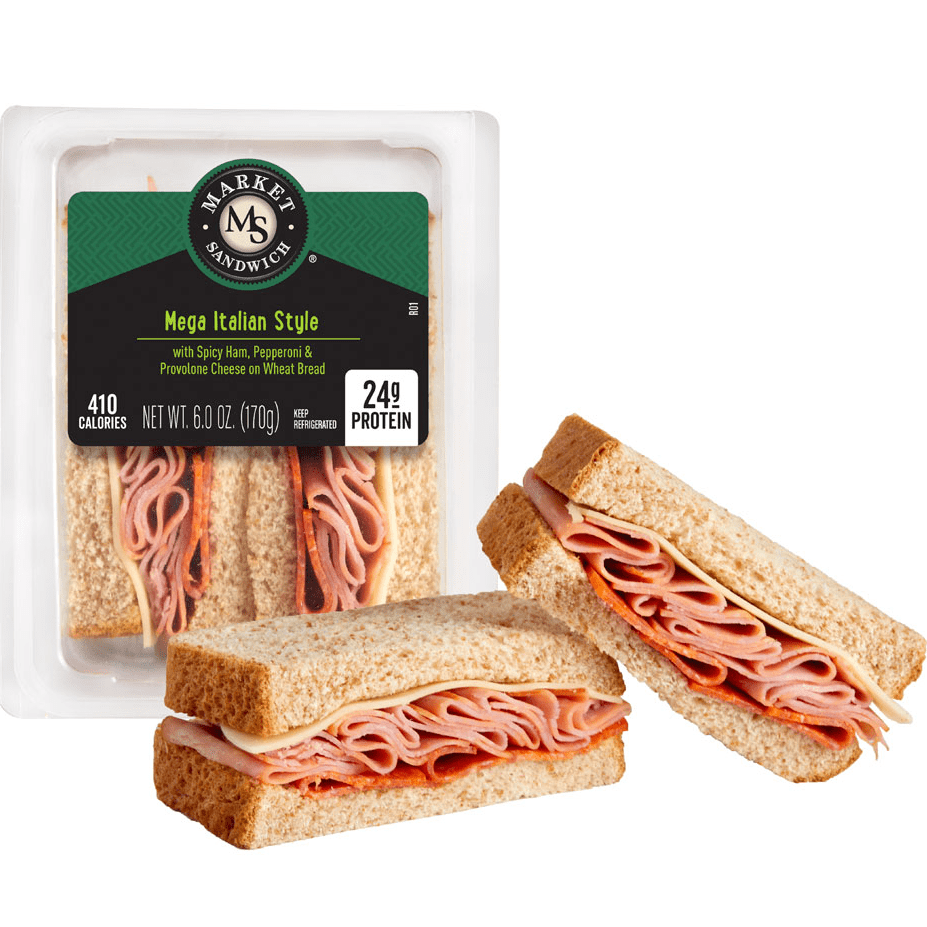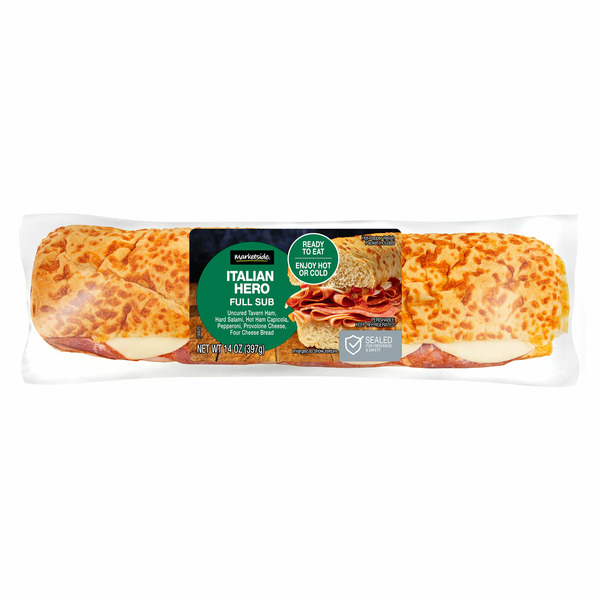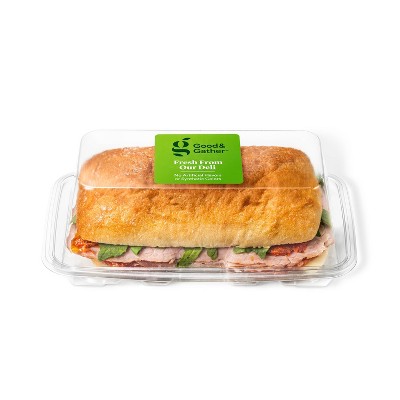LUNCH
MAIN DISHES
Sandwich
A sandwich is a popular and versatile food item that typically consists of various ingredients placed between two slices of bread. Originating in the 18th century, it was named after the 4th Earl of Sandwich, who popularized this convenient approach to eating. Sandwiches can be enjoyed cold or hot, using various types of bread and an extensive array of fillings to suit a variety of tastes and dietary requirements.
Common sandwich ingredients include, but are not limited to, sliced or spreadable cheeses, cold cuts, vegetables, and condiments such as mayonnaise or mustard. Common variations include the popular grilled cheese, the club sandwich, and the veggie sandwich. They are enjoyed worldwide as a quick, portable meal or snack that can be easily customized to individual preferences.
59%
CARBS
16%
FAT
25%
PROTEIN
1,120 Sandwich Products
Taylor Farms Turkey & Cheddar Sandwich Sliders, 3 Count
Taylor Farms Ham & Swiss Sandwich Sliders, 3 Count
Life Cuisine Chicken Mozarella Sandwich
Member's Mark Chicken Salad Sandwich on Croissant
Market Sandwich Mega Meat Italian Wedge Sandwich
Market Sandwich Mega Meat Turkey Havarti Wedge Sanwich
Eataly Housemade Prosciutto Crudo & Arugula Panini Sandwich
Member's Mark BBQ Rib Sandwich, Frozen, 10 ct
Marketside Italian Hero Uncured Tavern Ham, Hard Salami, Uncured Capicola, Pepperoni, Provolone Cheese & Hot Pepper Relish On Four Cheese Bread Full Sub
Italian-Style Ciabatta Sandwich
46 Recipes for Sandwich
3
Deluxe Caprese Sunrise Sandwich
1
Delectable Artisanal BLT Sandwich
5
Heavenly Mushroom and Avocado Open-Faced Sandwich
5
Tuscan-Style Mozzarella Melt Sandwich
1
Heavenly Green Grilled Sandwich
5
Ultimate Triple Decker Sandwich
5
Golden Crisp Egg & Cheddar Sandwich
Country-Style Bacon and Sunny Side-Up Sandwich
Sandwich FAQ
Do I need any special equipment to make a sandwich?
What kind of bread should I use for my sandwich?
What are some common sandwich fillings?
How do I prepare my ingredients for my sandwich?
What are some tips for making a great sandwich?
Can I make substitutions based on my personal taste or dietary preferences?
How can I adjust the consistency or texture of my sandwich?
How can I store my leftover sandwich?
Expiration & Storage Tips
When does Sandwich expire?
The lifespan of a sandwich will vary greatly depending on what it's made with. In general, a sandwich made with fresh ingredients can last for up to 48 hours when refrigerated immediately after preparation. For sandwiches containing perishable ingredients (like deli meats, eggs, or dairy products), it's best to consume them within 4 hours if they have been kept at room temperature, or within two days if continuously kept in the refrigerator. Keep in mind that store bought pre-packaged sandwiches may contain preservatives, extending their shelf life compared to homemade counterparts. You should always follow the 'use by' date printed on their packaging.
If you opt for freezing, most sandwiches (especially those with meat and/or cheese) can be frozen for up to a month. However, any sandwich with mayonnaise or veggies won’t do well in the freezer as these ingredients don't hold up to freezing.
How do you tell if Sandwich is bad?
Check for signs of mold, particularly on the bread and within the sandwich fillings. This could present itself as spots of green, white, or black. If you notice mold, it's best to discard the entire sandwich. Besides mold, pay attention to the aroma and texture of the sandwich. If it smells off or if the ingredients inside have become slimy, these are sure signs the sandwich has gone bad. Finally, if the sandwich contains meat and the meat has an unusual color (grey or brown instead of pink for ham, for instance), it might not be safe to eat.
Tips for storing Sandwich to extend shelf life
• Always store sandwiches in the refrigerator if not consumed straightaway. This will slow down the growth of bacteria and keep it fresh for longer periods.
• Use air-tight containers or sandwich bags to keep sandwiches fresh. Exposing sandwiches to air can dry them out and speed up the spoiling process.
• If you plan to eat the sandwich within a few hours, keeping it wrapped in aluminium foil can maintain its temperature (whether hot or cold.)
• Should you want to freeze your sandwich, avoid ingredients that don't freeze well, like lettuce, tomatoes, cucumbers, and mayonnaise.
• Defrost the sandwich in the refrigerator or at room temperature. Microwaving can make the bread soggy.
EXPIRES WITHIN
4 - 14
DAYS
Equivalents
Health Info
Macros
34g
CARBS
10g
FAT
18g
PROTEIN
Allowed on these diets
VEGETARIAN
LACTOSE FREE
Contains these allergens
WHEAT

